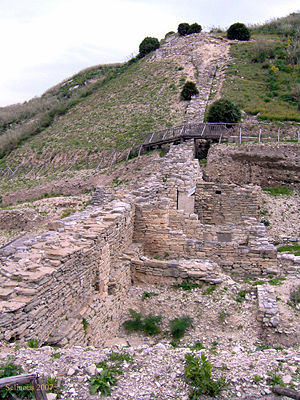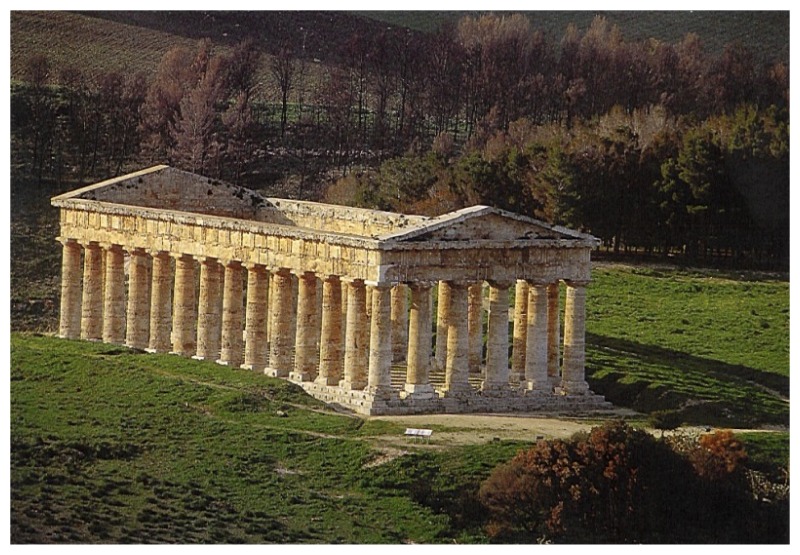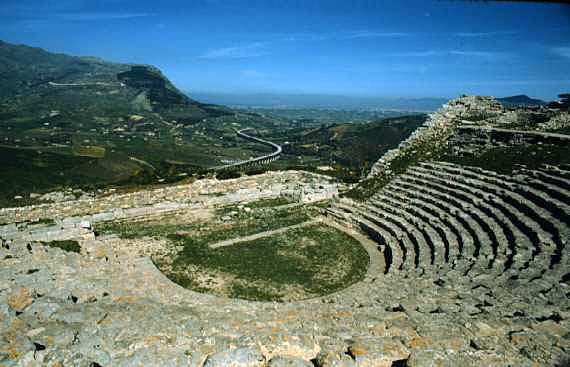At the center of a large and picturesque valley rises
Several legends surround the mystery of its birth: one wants that the city had arisen at the behest of Aeneas, who left here the Trojans wich did not want to continue the journey that the Hero intended to follow; another legend attributes the foundation to Acestes, the son of river god Crinito and the Trojan Acesta, which would transfer, right in Segesta, Trojan refugees in Erice, and finally, a legend Elymastells that Aeneas built the city making an offer to the nymph Segesta, the same name, as a tribute to his gratitude for the hospitality received.
Segesta, known for its long and troubled history, remembered as a major player in the chronicles of Diodorus Siculus, was also famous for its thermal baths, still used, created by the nymphs, another legend tells, who had the task of making happier rest of Hercules.
On Mount Barbaro, against the backdrop of a natural stage, created by the segestan valley cliff, stands the Theatre, "Scene of the classics of the ancient world," who comes to life during the summer season thanks to the playing of performances of classical repertoire, wich enchant the viewer with a dip in the atmospheres of other times.
The theater is located about 400 meters above sea level. on the northern slopes of Mount facing north, likely to enjoy the wonderful panorama that embraces the sea and Mounts Erice, Bonifato and Inici. Its date is supposedly dating from the fourth century BC
Its semi-circular auditorium (63 meters in diameter) is bounded by a retaining wall, and consists of twenty steps carved into the rock and divided into seven wedges sloping down to the U-shaped lodge orchestra. This lodge was equipped with an underground passage that allowed the actors to appear suddenly on the scene. The scene, unfortunately known to us mutilated, was formed by a sumptuous two-story building flanked by two side walls adorned with figures of Pan and decorated at the front by two telamons.
The temple, dating from the fifth century BC, was built according to the canons of Doric and has a pedestal or stylobate, with three steps; it was also decorated by 9:36 meters tall fluted columns, which are presented, as well as those of the Parthenon in Athens, slightly swollen to correct optical illusions. Given the lack of the cell of the gods, as well as the coverage, it is assumed it is a pseudo-peristyle temple (deliberately open) raised to give prestige to a local cult, probably not greek.




